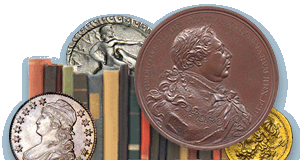
PREV ARTICLE
NEXT ARTICLE
FULL ISSUE
PREV FULL ISSUE
NOONANS TO SELL BRITISH IRON AGE COIN HOARDNoonans Mayfair will be selling a hoard of 67 British Iron Age Coins on Thursday, May 29, 2025. -Garrett 67 British Iron Age Coins (silver staters) discovered over a five-day period in April 2022 by a 90-year-old metal detectorist buried by a fence within a remote Dorset meadow in Cranborne are estimated to fetch in the region of £20,000 at Noonans Mayfair in a sale of Coins, Historical Medals and Numismatic Books on Thursday, May 29, 2025. As the finder, who lives just 15 miles away from the discovery location and wishes to remain anonymous recalled: "I have been metal detecting since 2002 and on the day that I found the staters, at about midday, it was nice and clear weather." He continued: "I was out detecting during a club meeting using my White XLT detector and initially found a Victorian penny buried by the gateway. I sat by a nearby tree for lunch and pondered whether there would be more in that spot, so I decided to persevere and continue digging, but rather than finding more pennies, something silver popped up. Without a doubt, I knew what I had found, a silver stater of the Durotrigan people. My fellow detectorists offered their assistance and eventually 67 Staters were unearthed. The fence was wrapped in wire which confused the metal detector's signals, but after removing the wire with permission from the landowner, no more coins were found. The fence by the find spot was placed at some time during the 1800s. During this process, there is a good chance that the hoard was broken up." He finishes: "This hoard was a truly exciting find, but slightly tempered at the thought that it was someone's considerable loss." Before taking up metal detecting, the finder was a professional diver, which inspired him to start metal detecting as he was interested in shipwrecks and treasure. He notified the finds liaison officer the next working day after finding the hoard, however no museums or experts have been involved, but Dr John Talbot will be including a study of the hoard in his upcoming book about Durotrigan coinages, which is due to be published in the next 2-3 years. The finder will share the money with the landowner, but he has no set plans with what to do with the funds raised, other than to enjoy it! Noonans Coin Specialist Alice Cullen continues the story: "It is thought that the coins may have initially been buried together as one deposit, supported by the fact that many of the coins were found in clusters. However, no vessel was found. There is no place better to find Cranborne type staters, than in Cranborne itself! The coins may have even been deposited as a ritual offering, suggesting that perhaps nothing untoward happened at all." She adds: "This hoard in particular offers unto us the opportunity for a fascinating case study into this series of silver staters. These coins were first struck in silver with a high gold content, known as ‘white gold', however the precious metal content declined over time to silver and then to billon. XRF analysis suggests that these were struck early the series, some having a little over 11% gold, some being as pure as 93% silver and some having a silver/ copper ratio of approximately 70/30. In addition, the weights range significantly from 6.09g to 3.83g."
Wayne Homren, Editor The Numismatic Bibliomania Society is a non-profit organization promoting numismatic literature. See our web site at coinbooks.org. To submit items for publication in The E-Sylum, write to the Editor at this address: whomren@gmail.com To subscribe go to: Subscribe All Rights Reserved. NBS Home Page Contact the NBS webmaster 
|


